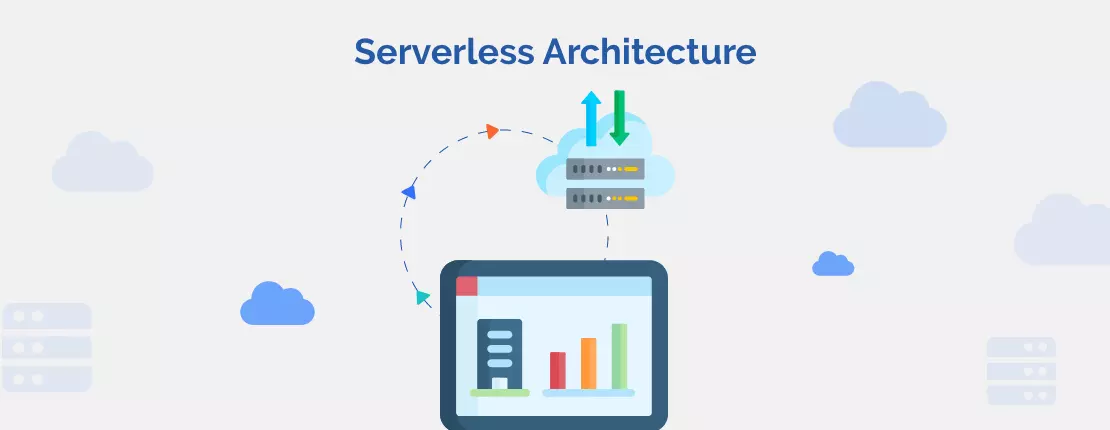What Is Serverless Architecture ?
Serverless architecture is a way to build and manage applications and services without thinking about server software and hardware infrastructure. Here, the infrastructure is hosted and managed by a third party service. Serverless does not mean that the server is not involved. It means that the management of the server will not be the developer's responsibility, but will be managed by the third party. Some of the currently available cloud services including AWS Lambda, Google Cloud functions, Azure function, IBM OPenWhisk, Auth0 Webtask are examples of serverless architecture.
Categories of Serverless Architecture -
-
FaaS(Function as a service)
Faas is also known as framework as a service. It is a category of serverless architecture and allows the user to develop, run and manage the application functionality without managing and maintaining server architecture. FaaS is associated with developing and managing the application and is a third party platform you only have to pay when you use it. The benefit of FaaS is that it allows the developer to completely focus on more design, running and management of application functionality. Widely used Faas Options are AWS Lambda, Google Cloud Functions, Microsoft Azure Functions and open-source options from Oracle and IBM. -
BaaS (Backend as a Service)
Baas is similar to FaaS, and allows the developer to focus more on the frontend and client side logic development without working on the backend. BaaS provides Apis and SDK to interact for backend functions and developers are able to integrate all the functionalities without building it, while also managing server, virtual machine or container to maintain the application. Some examples of BaaS include database management, cloud storage, user authentication, push notification, remote updating and hosting among others. -
Database
A serverless database accesses and automates all your database functions including read and write operations. This type of database is basically designed for workloads that are unpredictable. -
AWS Lambda
This is the most popular serverless framework. This server allows the developers to work without the need of physical infrastructure and handles all the backend and administrative functions. It support Nodejs, Jave, C# , Go, Ruby and Python. -
Google clouds functions
Google offers a serverless execution environment for building and connecting cloud services. It provides a small cloud platform to perform some specific and limited operations.
Now, why would a company move from server architecture to serverless architecture ?
Businesses using server architecture must check regularly for updates including security updates that must be installed manually as soon as they are ready. Similarly, the licence of the server software is an aspect that needs to be verified on a constant basis. Thus, a server architecture calls for considerable maintenance and management costs from the perspective of the business.
On the contrary, a serverless architecture being third-party managed reduces the maintenance costs to a great extent.
For better understanding, the advantages and drawbacks of serverless architecture, through the lenses of business and developer are given below:
Benefits & drawbacks for the business -
Benefits for the business -
-
Low pricing
The cost of serverless architecture is dependent on the call of the functions that are measured in milliseconds instead of hours. Here, you pay only for what is used. -
Faster development
Faster delivery of features in the market as developers need not worry about servers so that they can work with more focus and more quickly. -
Save the cost of hiring developers
The cost of hiring a backend infrastructure developer will be reduced as third parties will provide all the backend server management services. -
Save operation cost
You pay the charges only if you are using the resources, no extra costs are incurred. -
Pay on demand
You pay the charges only if you are using the resources, no extra costs are incurred.
Drawbacks for business -
-
Vendor lock-in is a risk
The server is completely controlled by a third party vendor and it gets difficult if the business wishes to switch the vendor later. -
Security risk
Due to use of a third party library, your application could be potentially at a risk. For instance, risks such as cyber attacks are possible, due to open source dependency. Moreover, if users leave their secret key and configuration in a simple plain text, attackers can read the text and can harm to your application. -
Flexible costs
Cost of serverless architecture is not fixed as the cost depends on the number of execution.
Benefits & drawbacks for the developer -
Benefits for the developer -
-
Reduce management effort
It saves the time involved in the management of backend server and developer don't need to think about server management part. -
Setup faster
Setup will done be faster as we don't need to think about backend server setup as it will be manage by third party More importantly we don't need to think about number of concurrent request for server. -
More focus on user experience and front-end logic
By Using serverless architecture, developers will get more time to focus on user experience and front-end logic. -
Auto scaling
One of the most important features provided by AWS lambda if it increases the server usage as per requirement. As the traffic increases it increases the power to maintain the flow.
Drawbacks for the developer -
-
Use of third party APIs
Developers may face complexities if the serverless architecture calls for using third party library or APIs. -
Lack of operation tools
The developers, in the case of serverless architecture, are dependent on vendor debugging and monitoring tools. -
Architecture complexity
Serverless architecture is complex as developers will need to test each and every function before implementing. -
Implementation drawbacks
Integrating and testing serverless architecture is tough job.
We hope this article has demystified the landscape of serverless architecture for you. Keep visiting this space to understand more about this space. For more about the goings-on in the development of serverless architecture, write in to us!





